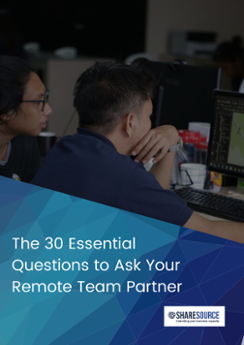As offices begin to reopen, most companies are planning for a ‘hybrid’ working model future. ‘Hybrid’ is a tricky concept though - it fails to capture the scope of change that’s possible and needed. It’s a work model that risks creating confusion and chaos unless it’s clearly laid out and understood by all involved.
Future Forum and Boston Consulting Group have recently undertaken very insightful research into finding ways to successfully create sustained high performance flexibility. One thing’s clear - there’s no ‘one size fits all’ approach. They have, however, found principles that align and guide teams - and different guardrails to help bring these to life. They also reiterate the important point that engaged, diverse talent drives competitive advantage. And that in order to attract, retain and engage this talent, flexibility is paramount. A recent survey by the Future Forum Pulse found that 76% of people want some form of flexibility where they work, while a huge 93% want flexibility when they work. Flexibility is now a core benefit - ranking second only to remuneration amongst factors that employees value in their jobs.
So what do leaders need to focus on to ensure successful implementation of new flexible working models? Behaviour Change is key. It’s no longer as simple as how many days a week employees are expected to come into the office. Instead, focus on behaviour and mindset change. Provide flexibility and freedom for people to do their best work. This means providing flexibility in when as well as where, and measuring performance in outcomes not activity. As one size never fits all, gives teams the autonomy to achieve goals - rather than top-down directions. Maintain a learning mindset by being adaptive and prioritising and creating opportunities for experimentation and sharing best practices. Norms will evolve so commit to measuring outcomes and adjusting as you go.
Setting Guardrails to help boost productivity and avoid inequitable experiences is also crucial. These will vary across teams, industries, companies and cultures, however examples in the workplace include:- shared space for teamwork first. Reimagine, experiment with and redesign shared space for collaboration, while still meeting the needs of individuals. Depth over breadth for team time. Monthly or quarterly events (with sufficient advance notice) should be focused on - rather than which specific days of the week people come into the office. One dials in, all dial in. Meaning leaders should level the playing field by avoiding ‘in-person favouritism’. Remote participants should always be enabled to be equally present and part of the discussion.
Leadership and Culture is also super-important for showing the way forward. Lead by executive example and ensure senior executives are just as distributed as employees who are or aren’t coming into the office more than two to three days a week regularly. Find small ways to highlight flexible work across the organization - for example one company’s executive team changed their public profile pictures to show them WFH. Reskill managers to measure success on outcomes, not attendance and build psychological safety in teams - particularly diverse ones. Hiring for soft skills and emotional intelligence as well as expertise will drive lasting results. Leverage digital tools and virtual company-wide communication. Make sure executive leadership is not centralised in any one physical location - create a ‘digital headquarters’.
Finally, Ways of Working need to be reevaluated. For example, establish core team hours (approximately a three to five-hour timeframe) when teams must be online for collaborative in-sync engagement. Allow individual work schedule flexibility beyond this. Measure impact, not actions. For example, instead of tracking staff hours, use an internal or external Net Promoter Score to rate their impact. Eliminate or disaggregate meetings. Challenge recurring meetings to make discussions more meaningful and move status checks or information sharing into digital channels. Choose brainwriting over brainstorming and augment this with digital collaboration tools.
There’s no doubt that the majority of staff never want to go back to pre-pandemic norms. However many are also eager to move on from the all-remote experiment forced upon them since the pandemic began. If you are looking to attract and retain the best talent, you need to develop an entirely new way of working: a flexible model that fundamentally reimagines not just where but also when and how people work. Your distributed work model needs to be successful for all types of people.

If you’re looking for a remote team partner who truly cares about adding value to your business, Sharesource could be the answer you’re looking for. Download our eBook, '30 Essential Questions to Ask a Provider Before You Outsource’ to ensure you're informed and have the right questions to ask when considering the next step.

.png)
.png)